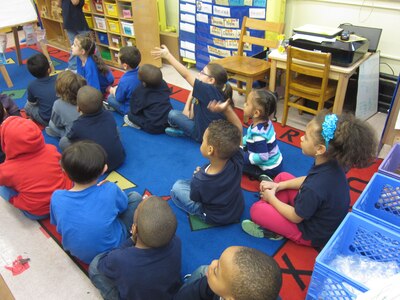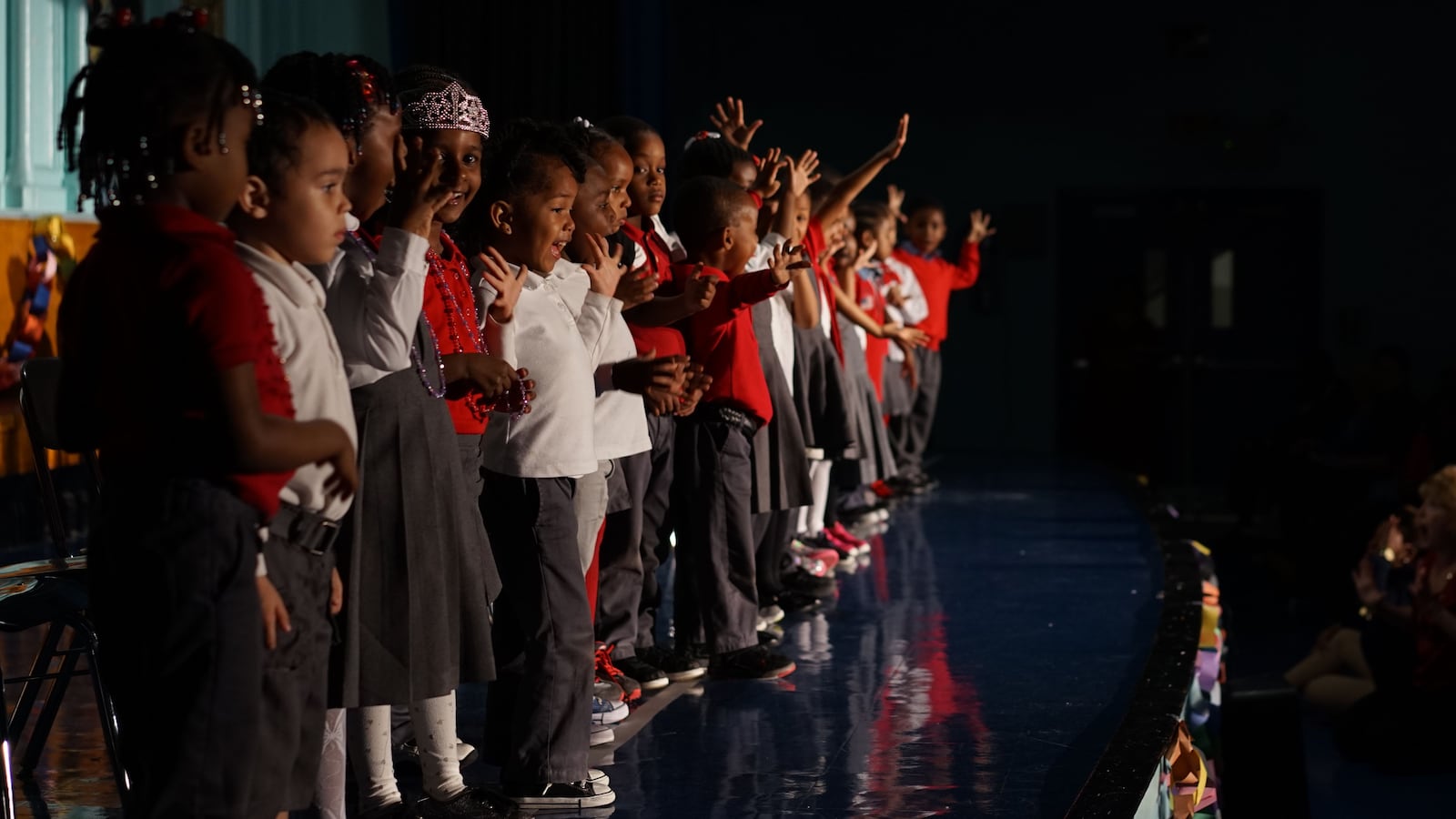Mayor Bill de Blasio has made clear that he wants all kids to have the head start that full-day pre-kindergarten can provide. But he can’t serve four-year-olds from City Hall, and his ambitious plan to place 4,268 more pre-K students in public schools by September rests on schools across the city being ready to receive them.
At five schools that are preparing for pre-K next year, principals and teachers all agreed that pre-K gives students a leg up academically and socially when kindergarten rolls around. The school leaders also shared the logic behind their individual decisions to apply for new seats, offering a window into the varied hopes and calculations at play as schools across the city prepare for the pre-K push.
Boosting enrollment in a competitive district
In some grades, P.S. 63-S.T.A.R. Academy in the East Village only has enough students to fill one class. Principal Darlene Cameron said she wants to be able to fill two classes per grade and thinks opening a second pre-K class might help.
“That’s best way to grow your school: Start with an early grade and work your way up,” she said.
Given District 1’s choice policy, which allows parents to apply to any nearby elementary school, schools are constantly competing for students. Cameron’s hope is that students who enroll at P.S. 63-S.T.A.R. academy for pre-K will decide to stay.
Administrators have been recruiting students at local Head Start preschool programs and offering tours of the school’s building and existing pre-K class, hoping to fill up the new one. One of the challenges, Cameron said, is figuring out which parents are truly interested in the school, and which are planning to stay for a year and apply elsewhere for kindergarten.
“We’re trying to steer towards families that really want their child here for the long run,” Cameron said.

Securing funds to fill existing facilities
For many city schools, preparing to add pre-K classes means building new bathrooms, since pre-K classes are required to have their own.
But at P.S. 115 in Canarsie, the necessary construction took place more than 10 years ago. The school has five classrooms with bathrooms and preschooler-sized furniture, grouped along a hallway intended for use as a early education wing.
Without enough funding to run more than three pre-K classes, parent coordinator Jayne Sclavos said the school has been using one of the classrooms as a dance studio and another as a theater room. Through the city’s universal pre-K initiative, the school will open two additional full-day pre-K classes in September.
“We’ll be getting to better utilize the building now,” Sclavos said, adding that the school is constructing a new dance studio and plans to move theater classes to a multi-purpose room.
With nearly 1,200 students in the upper grades and many parents eager to send their pre-K and elementary-age students to the same school, Sclavos said she doesn’t expect to have trouble filling the new seats.
Building a strong foundation in Far Rockaway
When Christina Villavicencio became principal of P.S. 197 in 2011, the Queens elementary school had only one pre-K class. She saw students struggling in older grades and wondered what it would take to help them earlier.
“We’re a school with need, and I’m saying gosh, what’s going on?” she said. “We need to build the foundational grades. One way to really boost up rigor and performance is to build strong early childhood programs.”
She said most pre-K students stay at the school and arrive in kindergarten already familiar with daily routines and with the school’s approach to literacy, math, and science.
The differences between rising kindergartners who had attended pre-K and those who hadn’t was so great, she said, that when a teacher suggested keeping the pre-K students together in one kindergarten class for this school year, Villavicencio said no on the grounds that it would constitute “homogenous grouping.”
Running five pre-K classes next year will be challenging but worthwhile jump, she said, given that pre-K options in already-isolated Far Rockaway have been particularly limited in recent years, after many of the local churches and community organizations that used to offer pre-K were damaged by Superstorm Sandy.
Responding to a request
Roberta Davenport, the principal of P.S. 307 in Vinegar Hill, said she didn’t initiate the application process for new seats.
“I didn’t ask the department for seats. I got a phone call,” she said.
The school has four pre-K classes already and will open two more this fall. Once she agreed to the new seats, she said, she launched into planning mode.
“I don’t like chaos. I like executing a smart plan,” she said. “When you’re looking at organization of school around 108 four-year-olds, you look at breakfast, lunch, dismissal.”
Growing a new school in two directions
Principal Kevyn Bowles was in his first year as principal of New Bridges Elementary, a new school in Crown Heights, when de Blasio called on schools to apply for universal pre-K funding.
Expansion was already part of Bowles’s plan for the 2014-15 school year, since the school currently only serves students up to second grade. New Bridges is replacing P.S. 167, a school being phased out of the same building.
Universal pre-K funding is allowing Bowles to expand “down” as well as “up.” The school currently has two pre-K classes and will open three more in September.
“To be able to say that we’re going to basically start a year earlier—for so many students it’s such a big opportunity,” he said.
Follow Chalkbeat on Facebook and Twitter for the latest New York City education news.

